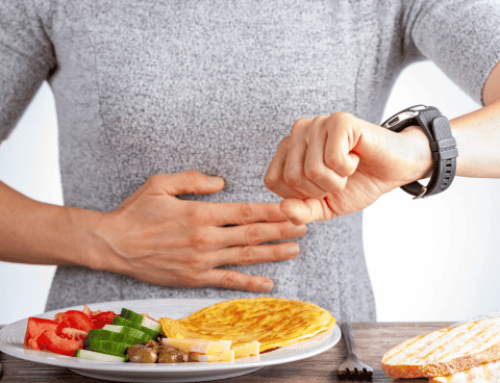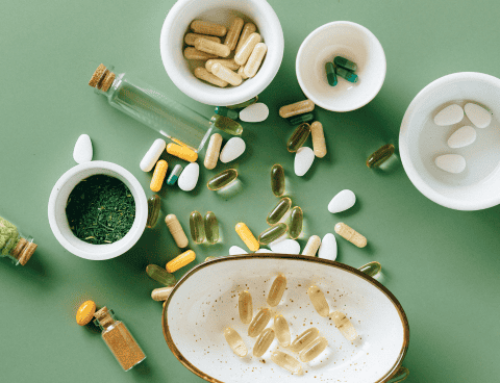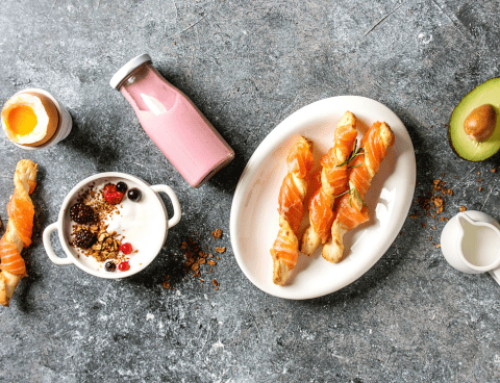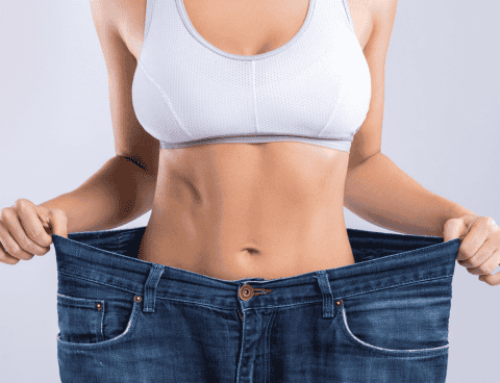Is Dave’s Killer Bread Actually Healthy?
Dave’s Killer Bread is the largest organic bread company in North America.
According to The Ringer, the company’s products were available in over 22,000 stores in 2018—a number that’s surely continued to swell since.
What makes Dave’s Killer Bread so popular?
The mascot—a caricature of founder David Dahl, an ex-convict who turned his life around by baking bread—gives the brand an ultra-cool vibe. The emphasis on whole grains and no artificial ingredients pleases health-conscious consumers, and in a day and age where traditional white bread might as well be the devil incarnate in many people’s eyes, more folks than ever are seeking out such products.
But does the substance match the hype?
Is Dave’s Killer Bread Actually Healthy?

Photo via Dave’s Killer Bread
Although Dave’s does manufacture products like English muffins, bagels, “breakfast” bread, and thin-sliced bread, we’re going to keep our focus on their core product line—the Killer Breads.
According to the company’s website, there are seven varieties of Killer Bread: White Bread Done Right, Blues Bread, Honey Oats & Flax, 100% Whole Wheat, 21 Whole Grains and Seeds, Good Seed, and Powerseed.
Each of these are USDA Organic, Non-GMO, and contain no artificial preservatives or ingredients. These are unabashedly good things, and the positives do not stop there.
Each variety contains at least 10 grams of whole grains per serving (which is defined as one slice of bread), while four of them (21 Whole Grains and Seeds, 100% Whole Wheat, Honey Oats & Flax, Powerseed) contain 19 or more grams.
According to the Whole Grains Council, the average American eats less than one serving of whole grains a day (a serving equals 16 grams of whole grain ingredients). That’s a shame, because whole grains are one of the healthiest foods humans can eat.
“Whole grains are regularly on the plates of some of the longest-lived, healthiest populations on the planet. These same populations have extremely low rates of obesity, heart disease, cancer and dementia. Whole grains are consistently linked to lower rates of chronic diseases, and they’re some of the densest sources of nutrients you can get,” says Ryan Andrews, RD and author of the book Drop The Fat Act & Live Lean. The Whole Grain Council recommends eating at least three to five servings of whole grains a day.
Additionally, one slice of any of the seven Killer Bread varieties contains at least 2 grams of fiber. Blues Bread and Powerseed contain 4 grams per slice, while 21 Whole Grains and Seeds contain 5 grams.
A study published in the Archives of Internal Medicine found that consuming more dietary fiber was linked to a lowered risk of death from any cause over a nine-year period. Participants who consumed the most fiber (roughly 25-30 grams per day) were 22% less likely to die than those who consumed the least fiber (10-13 grams per day).
According to the Mayo Clinic, a diet high in fiber can help normalize bowel movements, lower cholesterol levels, control blood sugar and aid in achieving a healthy weight.
The protein content appears to be another plus. White Bread Done Right contains 3 grams per slice, while every other Killer Bread variety contains 4-5 grams per slice. While most Americans have no trouble getting enough protein, they likely could benefit from getting a higher proportion of their protein from plant-based sources. While protein’s most publicized function is repairing and rebuilding muscle, it also plays an important role in satiety, and the body can use protein as a source of energy if needed.
These are all good things. But how about the calorie and sugar counts?
They are as follows:
- 1 slice of White Bread Done Right: 110 Calories, 2 Grams of Sugar (all added sugar)
- 1 slice of Blues Bread: 120 Calories, 4 Grams of Sugar (no added sugar)
- 1 slice of Honey Oats & Flax: 110 Calories, 5 Grams of Sugar (no added sugar)
- 1 slice of 21 Whole Grains and Seeds: 110 Calories, 5 Grams of Sugar (all added sugar)
- 1 slice of Good Seed: 120 Calories, 5 Grams of Sugar (all added sugar)
- 1 slice of 100% Whole Wheat: 100 Calories, 4 Grams of Sugar (all added sugar)
- 1 slice of Powerseed: 100 Calories, 1 Gram of Sugar (all added sugar)
Now things get a bit more hazy.
You do not need added sugar to make bread. Ezekiel 4:9 Sprouted Whole Grain Bread, for example, contains zero grams of sugar per slice yet boasts 4 grams of protein and 3 grams of fiber.
A gram of added sugar, as you’d find in a slice of Dave’s Killer Bread Powerseed, is pretty much insignificant in the grand scheme of your overall diet. But when you start talking about five grams of added sugar, as you’ll find in a slice of Good Seed, you can run into an issue.
Say you eat a slice of Good Seed for breakfast, and then you make a sandwich using two slices for lunch. All of the sudden, your “healthy” bread has contributed 15 grams of added sugar to your diet.
Added sugars are defined as “any sugars or caloric sweeteners that are added to foods or beverages during processing or preparation.” Unlike naturally occurring sugars, which are a product of mother nature and are found in everything from fruit to legumes, added sugars are added to foods by humans.
“Added sugars contribute additional calories and zero nutrients to food,” the American Heart Association states. “Over the past 30 years, Americans have steadily consumed more and more added sugars in their diets, which has contributed to the obesity epidemic.”
Diets high in added sugar have been linked to obesity, Type 2 diabetes, heart disease, tooth decay and even cancer. The American Heart Association recommends women consume no more than 25 grams of added sugar per day while men should consume no more than 36 grams a day.
The fact that the added sugar in Dave’s Killer Bread varieties like Good Seed or 21 Whole Grains and Seeds is coming along with a bunch of good ingredients and a significant amount of fiber certainly softens its negative impact, but it shouldn’t be ignored. I personally eat a lot of the stuff, but I tend to stick with the Powerseed variety largely because it contains just one gram of sugar.
Ultimately, Dave’s Killer Bread has a lot going for it. The whole grains, the lack of artificial ingredients, the high fiber and protein content—these are all great.
“Dave’s is certainly better than many other (breads),” says Kylene Bogden, Registered Dietitian and co-founder of FWDfuel Sports Nutrition.
But people should be aware that some of the Killer Bread varieties contain a significant amount of added sugar, and these are exactly the kind of innocuous sources that lead many people to over-consume it. The best approach—and this applies to any packaged food no matter how healthy it “looks”—is to check out the nutrition facts (including the serving size) for your preferred variety and become fully informed. Check out the sugars to see how much of it is added!
Additionally, while there’s nothing inherently unhealthy about bread, humans certainly don’t need it to survive. Bogden encourages her clients to get creative with bread alternatives, such as slicing a raw sweet potato, putting it in a toaster, and using that as “bread.”
And going off that point, bread is only as healthy as the things you put on it! If you’re slathering Nutella on your bread, the result isn’t going to be very healthy regardless of the type of bread you’re using. And on the flip side, a healthy bread can be made even healthier by topping it with healthy options like avocado, sliced produce, salmon, no-sugar nut butters, etc.
Photo Credit: Dave’s Killer Bread
READ MORE:
RECOMMENDED FOR YOU
MOST POPULAR
Is Dave’s Killer Bread Actually Healthy?
Dave’s Killer Bread is the largest organic bread company in North America.
According to The Ringer, the company’s products were available in over 22,000 stores in 2018—a number that’s surely continued to swell since.
What makes Dave’s Killer Bread so popular?
The mascot—a caricature of founder David Dahl, an ex-convict who turned his life around by baking bread—gives the brand an ultra-cool vibe. The emphasis on whole grains and no artificial ingredients pleases health-conscious consumers, and in a day and age where traditional white bread might as well be the devil incarnate in many people’s eyes, more folks than ever are seeking out such products.
But does the substance match the hype?
Is Dave’s Killer Bread Actually Healthy?

Photo via Dave’s Killer Bread
Although Dave’s does manufacture products like English muffins, bagels, “breakfast” bread, and thin-sliced bread, we’re going to keep our focus on their core product line—the Killer Breads.
According to the company’s website, there are seven varieties of Killer Bread: White Bread Done Right, Blues Bread, Honey Oats & Flax, 100% Whole Wheat, 21 Whole Grains and Seeds, Good Seed, and Powerseed.
Each of these are USDA Organic, Non-GMO, and contain no artificial preservatives or ingredients. These are unabashedly good things, and the positives do not stop there.
Each variety contains at least 10 grams of whole grains per serving (which is defined as one slice of bread), while four of them (21 Whole Grains and Seeds, 100% Whole Wheat, Honey Oats & Flax, Powerseed) contain 19 or more grams.
According to the Whole Grains Council, the average American eats less than one serving of whole grains a day (a serving equals 16 grams of whole grain ingredients). That’s a shame, because whole grains are one of the healthiest foods humans can eat.
“Whole grains are regularly on the plates of some of the longest-lived, healthiest populations on the planet. These same populations have extremely low rates of obesity, heart disease, cancer and dementia. Whole grains are consistently linked to lower rates of chronic diseases, and they’re some of the densest sources of nutrients you can get,” says Ryan Andrews, RD and author of the book Drop The Fat Act & Live Lean. The Whole Grain Council recommends eating at least three to five servings of whole grains a day.
Additionally, one slice of any of the seven Killer Bread varieties contains at least 2 grams of fiber. Blues Bread and Powerseed contain 4 grams per slice, while 21 Whole Grains and Seeds contain 5 grams.
A study published in the Archives of Internal Medicine found that consuming more dietary fiber was linked to a lowered risk of death from any cause over a nine-year period. Participants who consumed the most fiber (roughly 25-30 grams per day) were 22% less likely to die than those who consumed the least fiber (10-13 grams per day).
According to the Mayo Clinic, a diet high in fiber can help normalize bowel movements, lower cholesterol levels, control blood sugar and aid in achieving a healthy weight.
The protein content appears to be another plus. White Bread Done Right contains 3 grams per slice, while every other Killer Bread variety contains 4-5 grams per slice. While most Americans have no trouble getting enough protein, they likely could benefit from getting a higher proportion of their protein from plant-based sources. While protein’s most publicized function is repairing and rebuilding muscle, it also plays an important role in satiety, and the body can use protein as a source of energy if needed.
These are all good things. But how about the calorie and sugar counts?
They are as follows:
- 1 slice of White Bread Done Right: 110 Calories, 2 Grams of Sugar (all added sugar)
- 1 slice of Blues Bread: 120 Calories, 4 Grams of Sugar (no added sugar)
- 1 slice of Honey Oats & Flax: 110 Calories, 5 Grams of Sugar (no added sugar)
- 1 slice of 21 Whole Grains and Seeds: 110 Calories, 5 Grams of Sugar (all added sugar)
- 1 slice of Good Seed: 120 Calories, 5 Grams of Sugar (all added sugar)
- 1 slice of 100% Whole Wheat: 100 Calories, 4 Grams of Sugar (all added sugar)
- 1 slice of Powerseed: 100 Calories, 1 Gram of Sugar (all added sugar)
Now things get a bit more hazy.
You do not need added sugar to make bread. Ezekiel 4:9 Sprouted Whole Grain Bread, for example, contains zero grams of sugar per slice yet boasts 4 grams of protein and 3 grams of fiber.
A gram of added sugar, as you’d find in a slice of Dave’s Killer Bread Powerseed, is pretty much insignificant in the grand scheme of your overall diet. But when you start talking about five grams of added sugar, as you’ll find in a slice of Good Seed, you can run into an issue.
Say you eat a slice of Good Seed for breakfast, and then you make a sandwich using two slices for lunch. All of the sudden, your “healthy” bread has contributed 15 grams of added sugar to your diet.
Added sugars are defined as “any sugars or caloric sweeteners that are added to foods or beverages during processing or preparation.” Unlike naturally occurring sugars, which are a product of mother nature and are found in everything from fruit to legumes, added sugars are added to foods by humans.
“Added sugars contribute additional calories and zero nutrients to food,” the American Heart Association states. “Over the past 30 years, Americans have steadily consumed more and more added sugars in their diets, which has contributed to the obesity epidemic.”
Diets high in added sugar have been linked to obesity, Type 2 diabetes, heart disease, tooth decay and even cancer. The American Heart Association recommends women consume no more than 25 grams of added sugar per day while men should consume no more than 36 grams a day.
The fact that the added sugar in Dave’s Killer Bread varieties like Good Seed or 21 Whole Grains and Seeds is coming along with a bunch of good ingredients and a significant amount of fiber certainly softens its negative impact, but it shouldn’t be ignored. I personally eat a lot of the stuff, but I tend to stick with the Powerseed variety largely because it contains just one gram of sugar.
Ultimately, Dave’s Killer Bread has a lot going for it. The whole grains, the lack of artificial ingredients, the high fiber and protein content—these are all great.
“Dave’s is certainly better than many other (breads),” says Kylene Bogden, Registered Dietitian and co-founder of FWDfuel Sports Nutrition.
But people should be aware that some of the Killer Bread varieties contain a significant amount of added sugar, and these are exactly the kind of innocuous sources that lead many people to over-consume it. The best approach—and this applies to any packaged food no matter how healthy it “looks”—is to check out the nutrition facts (including the serving size) for your preferred variety and become fully informed. Check out the sugars to see how much of it is added!
Additionally, while there’s nothing inherently unhealthy about bread, humans certainly don’t need it to survive. Bogden encourages her clients to get creative with bread alternatives, such as slicing a raw sweet potato, putting it in a toaster, and using that as “bread.”
And going off that point, bread is only as healthy as the things you put on it! If you’re slathering Nutella on your bread, the result isn’t going to be very healthy regardless of the type of bread you’re using. And on the flip side, a healthy bread can be made even healthier by topping it with healthy options like avocado, sliced produce, salmon, no-sugar nut butters, etc.
Photo Credit: Dave’s Killer Bread
READ MORE:










